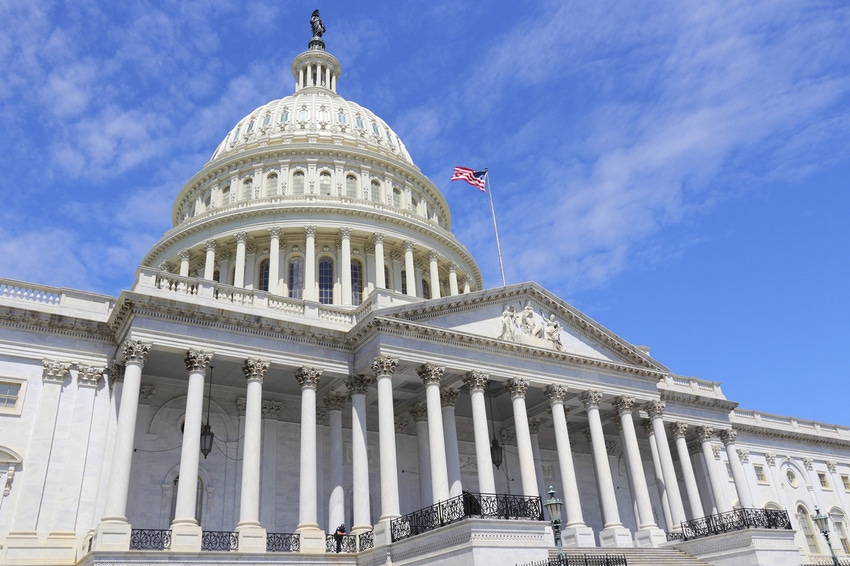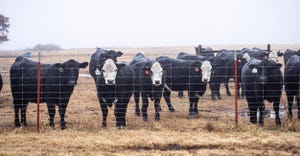House farm bill finally released
Farm bill keeps crop insurance program intact, increases CRP acres and establishes animal disease preparedness funding.

Against a backdrop of depressed commodity prices and a 52% drop in net farm income, House Agriculture Committee chairman Mike Conaway (R., Texas) introduced his committee's farm bill on Thursday.
For those in farm country, the bill predominantly keeps the crop insurance program intact, increases Conservation Reserve Program (CRP) acres and offers the barnyard coalition its sought-after animal disease preparedness funding.
All titles -- sans the nutrition title -- were produced with the support of committee ranking member Collin Peterson (D., Minn.). However, the final product may face deep partisan divides because of Democrats' concerns over a work requirement for individuals who receive Supplemental Nutrition Assistance Program domestic food aid.
In Title 1, the farm bill offers a one-time election for the Average Crop Revenue program or the Price Loss Coverage program. It also updates the county payment to be based off of Risk Management Agency data, as the hope is to address some of the differential payments seen across county lines, Conaway said.
Peterson had sought an increase in CRP acres, and Conaway’s bill offers this, with a cap up 29 million acres, up from the cap of 24 million acres in the last farm bill. This is done by reducing rental rates to 80% and further reducing rates for re-enrollment acres.
A big win for agriculture comes in the farm bill’s support of establishing a new National Animal Disease Preparedness & Response Program that's designed to protect the health of the nation’s livestock sector. It provides $450 million to enhance the U.S. Department of Agriculture’s ability to identify, diagnose and respond to a potential animal disease outbreak.
The bill also establishes a new U.S.-only vaccine bank with priority for stockpiling foot and mouth disease vaccine and provides for the enhancement of the National Animal Health Laboratory Network. Conaway said the bill offers the secretary of agriculture some resources to get the program off the ground.
The bill would bring several trade programs under a new umbrella to be called International Market Development Programs, which includes the Market Access Program (MAP), the Foreign Market Development (FMD) Program, the Technical Assistance for Specialty Crops (TASC) Program and the Emerging Markets Program (EMP). With a $255 million funding level, the new single umbrella offers a permanent baseline for trade-specific programs and provides USDA with no less than $200 million for MAP, no less than $34.5 million for FMD, $10 million for EMP and $9 million for TASC.
The Margin Protection Program has been renamed the Dairy Risk Management (DRM) program, and the first 5 million lb. of milk production on a dairy are eligible for higher coverage levels at lower premiums. Milk production not covered under DRM would be fully eligible for a comparable crop insurance policy. Finally, feed costs were studied to ensure accuracy in the DRM, and Class I milk calculations will be adjusted to help dairy farmers better manage risk in the futures market.
The bill maintains livestock disaster programs with modest adjustments, according to a summary of the bill.
The House version of the 2018 farm bill offered minor adjustments to the research title — including modifications to matching grant requirements and an increase in indirect costs — but did not include an increase in the authorizations for major grant-making programs of USDA like the Agriculture & Food Research Initiative. These programs, which once set the standard for scientific innovation, have not seen major changes since 2008.
Read the full legislative text of the Agriculture & Nutrition Act of 2018.
Read the section-by-section summary of the Agriculture & Nutrition Act of 2018.
Read policy highlights in the Agriculture & Nutrition Act of 2018.
About the Author(s)
You May Also Like




.png?width=300&auto=webp&quality=80&disable=upscale)
